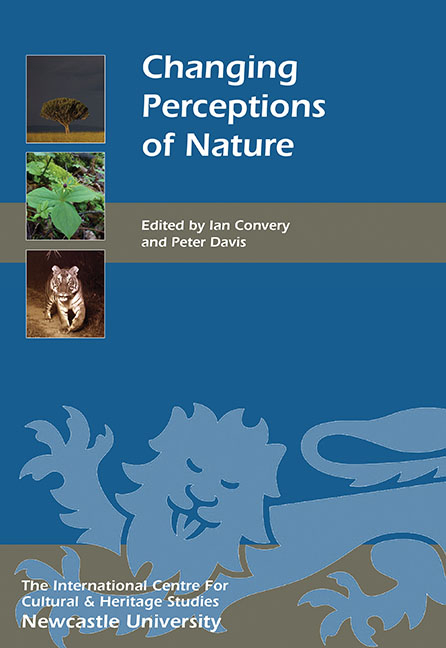Book contents
- Frontmatter
- Contents
- List of Illustrations
- Acknowledgments
- List of Abbreviations
- Foreword
- Introduction
- HISTORICAL PERSPECTIVES ON NATURE
- COLLECTING NATURE
- INTERPRETING NATURE AND LANDSCAPES
- 11 Changed Attitudes to Nature Reflected in the Transformation of Menageries to Zoos
- 12 Botanic Gardens: Changing Perceptions of Plants
- 13 Shifting Interpretations of the English Lake District
- 14 Facebook Nature: My Generation and Other Animals
- 15 Visual Narratives in Wildlife Film-making
- 16 A History of Half a Century of Wildlife Television and its Impact on Audiences
- 17 Landscape, Nature and the Contemporary Sublime in Illustrated Children's Literature
- CONSERVING NATURE
- PEOPLE–NATURE INTERACTIONS
- List of Contributors
- Index
- Miscellaneous Endmatter
16 - A History of Half a Century of Wildlife Television and its Impact on Audiences
from INTERPRETING NATURE AND LANDSCAPES
Published online by Cambridge University Press: 26 October 2017
- Frontmatter
- Contents
- List of Illustrations
- Acknowledgments
- List of Abbreviations
- Foreword
- Introduction
- HISTORICAL PERSPECTIVES ON NATURE
- COLLECTING NATURE
- INTERPRETING NATURE AND LANDSCAPES
- 11 Changed Attitudes to Nature Reflected in the Transformation of Menageries to Zoos
- 12 Botanic Gardens: Changing Perceptions of Plants
- 13 Shifting Interpretations of the English Lake District
- 14 Facebook Nature: My Generation and Other Animals
- 15 Visual Narratives in Wildlife Film-making
- 16 A History of Half a Century of Wildlife Television and its Impact on Audiences
- 17 Landscape, Nature and the Contemporary Sublime in Illustrated Children's Literature
- CONSERVING NATURE
- PEOPLE–NATURE INTERACTIONS
- List of Contributors
- Index
- Miscellaneous Endmatter
Summary
This chapter is a personal account of how the wildlife film industry has developed over the past half century and how natural history television programmes have influenced their audiences during this time. While much of what I say is based on my own reflections and observations, my career as a wildlife film-maker and later as a BBC senior manager – running both the BBC Natural History Unit and later the BBC's Factual departments – has given me rare insight into the subject and so hopefully my views have substance.
For over half a century, wildlife films have been reaching vast global audiences and have completely changed levels of awareness of nature across our population. This period has coincided with the greatest destruction of the natural world in human history. So how have wildlife films developed over this period and what has been their impact upon our relationship with nature? The early days of wildlife film-making were ones of true revelation. In 2015 it is difficult for us to imagine quite how little of our now very familiar natural world had ever been seen by the public half a century ago. When Hans and Lotte Hass dived into the Red Sea in the 1950s Under the Red Sea series (PolarFilm 1952), they were often witnessing natural scenes and events for the first time, let alone revealing them for the audience. Suddenly, unimaginable worlds were coming to millions of people. Coral reefs are a classic example. Before World War II, very few would have had any idea what a coral reef was, let alone have any grasp of the complexity of this most special marine environment. However, by the early 1960s, ‘coral reef ‘ was a household phrase. This new knowledge of such wonders was purely due to the invention of television and the wildlife documentary.
As television wildlife films developed in the 1960s, the emphasis was very much on filming, and so revealing, new species. The ‘collector’ mentality, which had driven Victorian naturalists to build museums and zoos, now became the driving force of the new breed of wildlife producers. The narrative behind most programmes was to show new parts of the world and to film new species.
- Type
- Chapter
- Information
- Changing Perceptions of Nature , pp. 165 - 170Publisher: Boydell & BrewerPrint publication year: 2016

